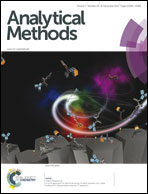Production and characterization of diphenyl ditelluride-loaded nanocapsules: validation using an analytical method
Abstract
Organotellurium compounds are important antioxidants, but they are extremely toxic. In order to avoid side effects, nanocarriers can be used to reduce toxicity and increase efficacy in the target cells. Therefore, the aim of this study was to produce and characterize diphenyl ditelluride [(PhTe)2]-loaded nanocapsules. Moreover, an analytical method was proposed to determine (PhTe)2 in nanocapsules. The (PhTe)2-loaded nanocapsules were produced according to the method of interfacial deposition of preformed polymers. The results demonstrated that (PhTe)2-loaded nanocapsules presented a mean particle size of 256 ± 19 nm at 24 hours, 255 ± 13 nm at 7 days and 255 ± 22 nm at 30 days; polydispersity index values were 0.15 ± 0.02, 0.13 ± 0.02 and 0.17 ± 0.03 at 24 hours, 7 and 30 days, respectively; zeta potential was −10.7 ± 0.6 mV, −12 ± 0.3 mV and −9.7 ± 1.6 mV at 24 hours, 7 and 30 days, respectively; pH values were approximately 6 at all times. The analytical method was linear in a range of 25–45 μg mL−1, with a good correlation coefficient (r = 0.9999). The procedure was specific, linear and precise, and therefore, this method can be applied for the quantification of (PhTe)2 in nanocapsule suspensions.


 Please wait while we load your content...
Please wait while we load your content...